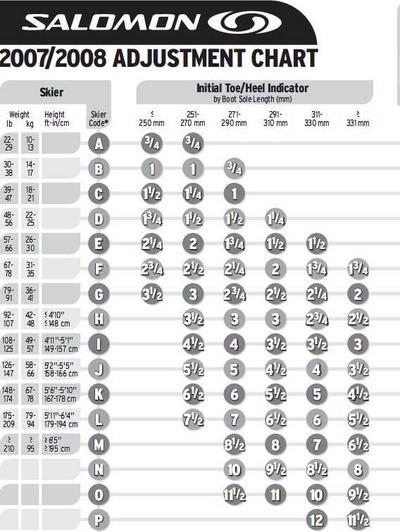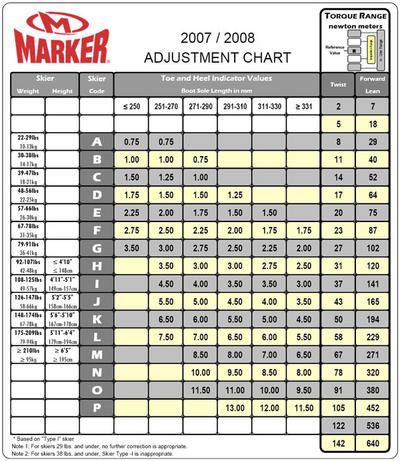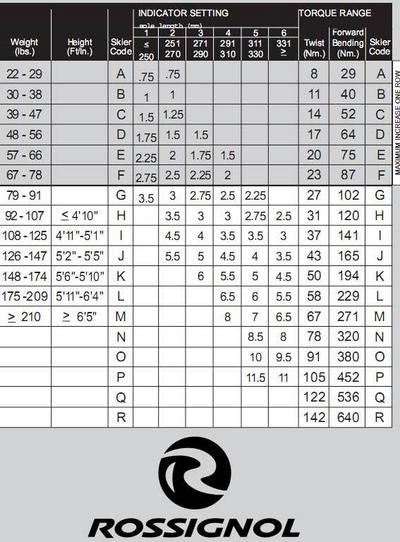A quick word on blocking ads

It looks like you are using an ad blocker. That's okay. Who doesn't? But without advertising revenue, we can't keep making this site awesome. Click the link below for instructions on disabling adblock.
Welcome to the Newschoolers forums! You may read the forums as a guest, however you must be a registered member to post. Register to become a member today!
As above, check your forward pressure first (or get it checked at a shop). If you feel like you're already using quite a high DIN then you may want to get the release pressure tested.
In terms of going up, bump your DIN up 1 DIN at a time or even 0.5 at a time until you're comfortable with the retention you're getting. 1 DIN can make a pretty huge difference. If you want to get an idea of how it'll feel in a bail, try kicking the tip of a ski sideways into the ground until it comes off.
Disclaimer: Taking binding advice from the internet will cause your legs to turn into mashed potato and be eaten by swarms of insects. So don't do it, you'll die and Splice Productions will film it.



You're skiing Griffons right?
What are they currently set to? If I was you I'd start off at 6 and go from there.
Here's the bit where we get all serious-faced about knee injury and put the fear of god in you. I'm not a doctor, but I've gone through the whole ruined knee business and it SUCKS.
Being 15, you're probably approaching skeletal maturity but it's possible that your growth plates (the bits in your bones that do the actual lengthening) aren't finished. If you tear an ACL, the conventional way (if you're using a patellar graft) of replacing it involves drilling into your tibia to insert a bone plug that's attached to the graft. If your growth plates aren't hardened yet, there's a good chance this will cause them to freak the hell out and stop growing properly. The worst case scenario with that is that your tibia stops lengthening while the other one continues, and you end up with different length legs. While this is real handy for traversing (in one direction only), it will seriously screw your skiing life up when they want to repeatedly break your leg and put it in traction until it's the same length as the other one.
When you're like 18, 20, that kind of age, your bones are significantly harder and the potential consequences of an ACL injury are considerably lessened. Also you'll bulk up and have more muscle to protect your ligaments in a crash.
Unless you're skiing in a manner that a ski coming off at a bad time would cause more injury than it not releasing in a crash, take the hits and keep your DINs sensible.
Sparknotes: I think 10 DIN is way too much for you. My friend who is an ex racer, instructor and general madman skis on 10, and he weighs quite a bit more than you.
The heelpiece of most bindings is mounted on a very short springloaded track that allows the heel to move forward and backward a small distance. If you click a boot into the ski and watch the heel you'll see it slide backwards then back forwards as the boot clicks in. This allows for small variations in the length of the ski underfoot due to the the ski flexing, as well as a cleaner release when you pop the heel up. It also provides forwards pressure to make sure the toepiece is fully engaged.
A sign of huge problems with forward pressure is if you have a forwards bail, which generally results in a vertical heel release, but the heelpiece is still in the 'closed' position. This indicates that you came out of the binding before the heel's DIN spring actually got involved.
When you come out of your skis it's worth noting whether it was the toe or the heel that released. If it was the heel it should be in the 'open' position. Coming out of the heel a lot tends to indicate that you might be landing too far forward. If you're coming out at the toe, it could be a forward pressure thing (and with STHs, if they have the driver toe, you also need to check the toe wing height) or DIN.
But if you don't understand forward pressure, you probably shouldn't be messing with your bindings - get your local shop to check it all over.